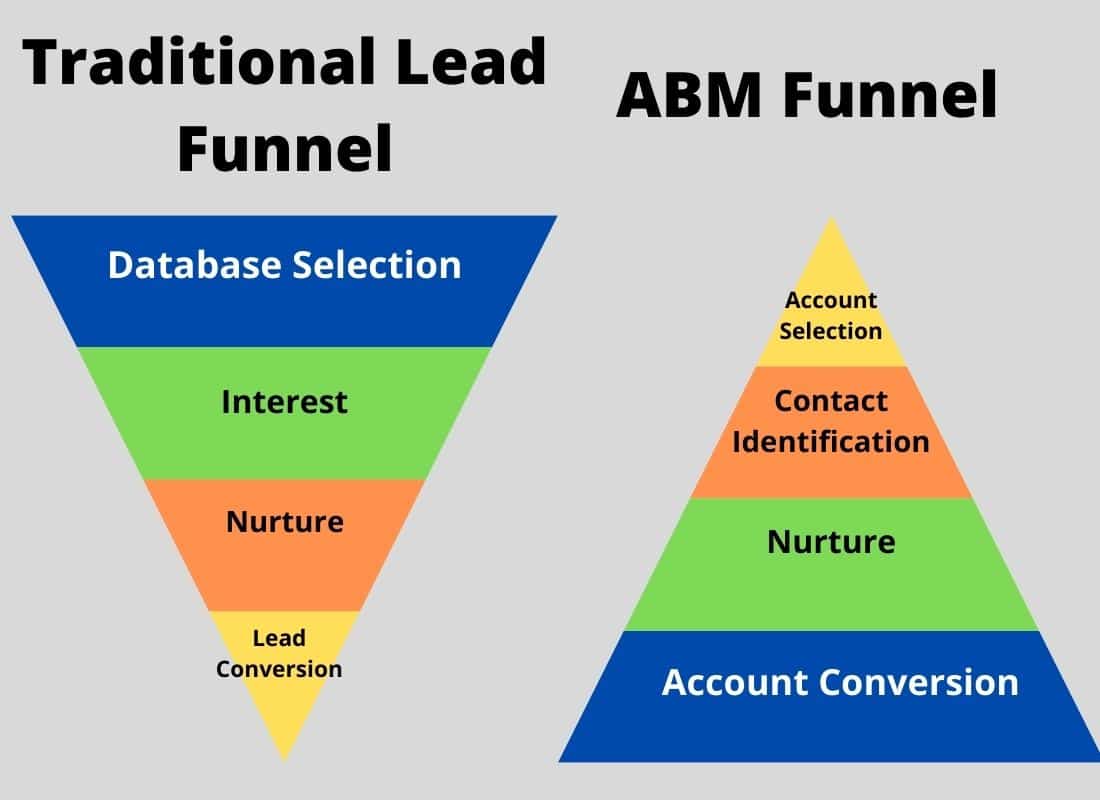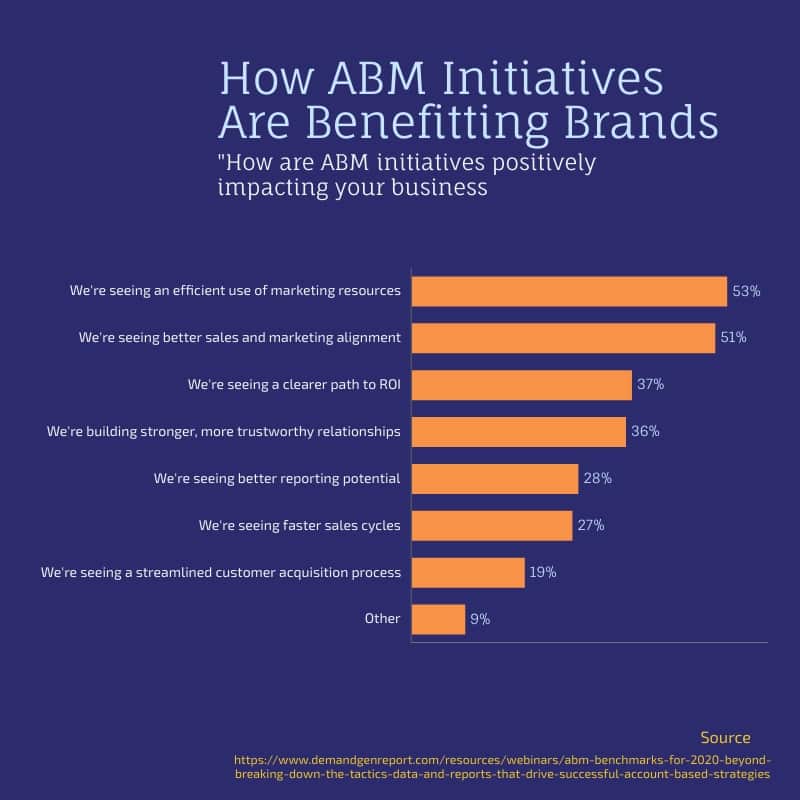
What Is Account Based Marketing: Quality Over Quantity
Regardless of your tools and software, sales relies on leads being able to go through the sales cycle. Our apps can help you retain your clients and simplify the sales and delivery process, but expanding your business requires internal strategy. With increasing competition, the demand for new leads ensures an ever growing cost. This doesn’t mean B2B’s should reduce their lead generation efforts though, it means they need to rethink how they interact with them.
Instead of targeting a broad group of leads with aggressive marketing, account based marketing views each lead as an individual market, or an ‘account.’ This way of thinking centers your team around the most personalized customer experience possible, guiding leads through a uniquely tailored B2B buyer journey. Ultimately, this increases value from your product, guarantees a longer life cycle, and builds lasting relationships for future sales.
Account based marketing is a way for businesses to elevate the value of sales leads already possessed, and maximize the profit those leads can generate over time. Consistency, a defined audience, and a collection of buyer data are vital factors for building a sales funnel that will adapt to any market.
Why Focus On Account Based Marketing Now?
Simply put, ROI. As many companies reduced their marketing budgets, teams were forced to stop spending for new leads and find profit from existing ones. The result? The 2020 ABM Benchmark Study reports that 75% of businesses saw improvements to their ROI using account based marketing and were able to cut back on wasted spending in the process.
Building Long Term Sustainability And ROI
Another study conducted by Demand Gen Report (shown below) in October showed us how a well structured ABM initiative can transform a brand’s overall marketing direction. Namely, it seems that the majority of businesses agreed it was by far the best way to construct a cost-effective B2B marketing and sales alignment.
- 53% found more efficient use of marketing resources
- 51% improved their sales and marketing alignment
- 37% found more reliable ROI
- 36% built longer lasting B2B relationships
- 28% found better reporting potential (arguably as valuable as ROI)
- 27% optimized their sales funnel
- 19% successfully created a streamlined B2B customer acquisition process

Forrester summarized it best with ‘modern B2B buyers want to be treated as partners, not targets.’ The mindset of viewing your buyers as targets won’t get you far, results in lower value leads, and ultimately halts the growth of your brand. Reaching out to your buyers as partners on the other hand, helps you to understand their needs, how you can create greater value, and ultimately improve the way your business views a customer-centric approach, establishing you competitively in the market.
As we mentioned when discussing B2B ecommerce demands, 50% of buyers identified improved personalization as a key feature for suppliers they want to work with. Brand trust, which 70% of survey responses claimed is more important than ever, is the other metric account based marketing correlates with, but we will be covering that more in our next blog. Because of this, utilizing account based marketing helps you retain and develop your leads into stronger ROI’s while optimizing your overall sales funnel and product/service.
How To Integrate ABM
After understanding the motivations of why account based marketing is applicable, the next step is figuring out an appropriate entry point for your industry. This depends heavily on where your company is in regards to its existing leads and its prospecting efforts.
Think in terms of ‘are we receiving leads that aren’t going anywhere,’ or ‘are we creating small sales from leads that aren’t increasing.’ If your business needs help getting leads, you might want to consider sales and marketing alignment (aka sales enablement) to establish a more prominent position for new contacts. If you currently have a decent amount of leads that are entering the sales cycle but are generating a lower ROI, it’s time to look into land and expand strategies to establish greater value.
Perfect Your Sales And Marketing Alignment
What happens when you directly sync marketing tasks with your sales operations? It’s common in businesses to separate the two departments, but this actually doesn’t make much sense. They both have the same conversion goals, interact with the same leads, but have different perspectives and information to offer each other.
The core basis of ABM is connecting with your leads in a meaningful way and coordinating their buyer journey, which can only be accomplished through sales and marketing alignment.
Trading Relevant Information Between Departments
Marketo reported 60-70% of marketing content is never used due to irrelevance to the buyer, while 79% of marketing leads never convert due to a failure to nurture the lead. With alignment, sales can inform marketers on what information is relevant to the buyer, and marketing can assist sales in targeting which leads to follow up with and develop.
Successful sales and marketing alignment creates increased revenue, a shorter sales cycle, and higher conversion rates. Ensure both departments are maximizing their potential with the information they can exchange.
This is a beneficial setup all B2B businesses should really be aiming for anyway, but when marketing on an ‘account level,’ the two departments are able to fully maximize both personalization, and brand trust.
Opportunities To Land And Expand
A ‘land and expand‘ strategy focuses on gaining a small entry point with a potential lead, and uses that over time to build a valuable relationship based around providing a more personalized service for higher ROI. Building around an ABM mindset puts you in an ideal position to implement a land and expand based campaign. Growing with your customer means your team better understands their needs (and businesses like them), creating ideal opportunities for larger sales that will benefit both parties in the long run.

The concept is to scale upwards through multiple different revenue streams, so not all leads make ideal candidates for this method, so the trade off is that more prospecting and research is required. Regardless, when executed properly, even a single match can become an essential source of revenue.
Final Thoughts
A common instinct for smaller businesses when sales and marketing efforts begin to fail is to retreat and cut costs, sizing down to retain profit margins. In an industry as competitive as the B2B market, this is the one thing you should never do. Your company has worked hard to earn the position it holds now, and scaling back opens that channel up for rival brands.
Take the time to encourage cooperation and communication on your accounts, and protect your investments. Don’t let all the time and money getting your business to this point go to waste, and instead invest care into your future.

No Comments